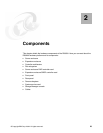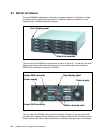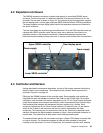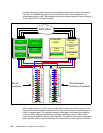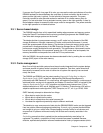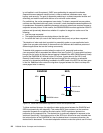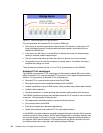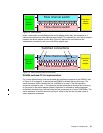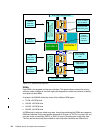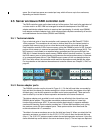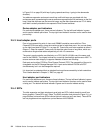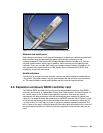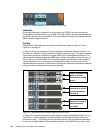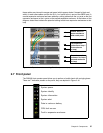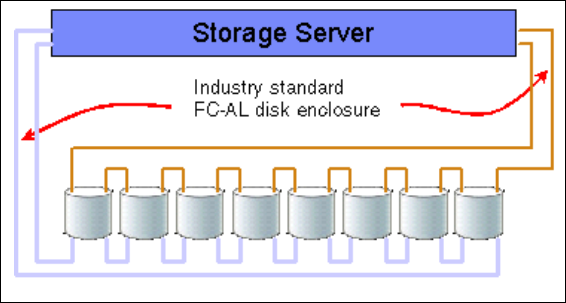
30 DS6000 Series: Concepts and Architecture
Figure 2-7 Industry standard FC-AL disk enclosure
The main problems with standard FC-AL access to DDMs are:
The full loop is required to participate in data transfer. Full discovery of the loop via LIP
(loop initialization protocol) is required before any data transfer. Loop stability can be
affected by DDM failures.
In the event of a disk failure, it can be difficult to identify the cause of a loop breakage,
leading to complex problem determination.
There is a performance drop off when the number of devices in the loop increases.
To expand the loop it is normally necessary to partially open it. If mistakes are made, a
complete loop outage can result.
These problems are solved with the
switched FC-AL implementation on the DS6000.
Switched FC-AL advantages
The DS6000 uses switched FC-AL technology to link the device adapter (DA) pairs and the
DDMs. Switched FC-AL uses the standard FC-AL protocol, but the physical implementation is
different. The key features of switched FC-AL technology are:
Standard FC-AL communication protocol from DA to DDMs
Direct point-to-point links are established between DA and DDM
Isolation capabilities in case of DDM failures, which provides easy problem determination
Predictive failure statistics
Simplified expansion: no cable rerouting required when adding another disk enclosure
The DS6000 architecture employs dual redundant switched FC-AL access to each of the disk
enclosures. The key benefits of doing this are:
Two independent switched networks to access the disk enclosures
Four access paths to each DDM
Each device adapter port operates independently
Double the bandwidth over traditional FC-AL loop implementations
In the DS6000, the switch chipset is completely integrated into the controllers. Each controller
contains one switch. Note, however, that the switch chipset itself is completely separate from
the controller chipset. In Figure 2-8 on page 31 each DDM is depicted as being attached to
two separate Fibre Channel switches. This means that with two RAID controllers, we have
four effective data paths to each disk, each path operating at 2Gb/sec.




